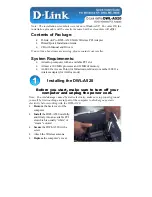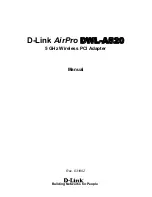
Wiegand Readers
Installation Guide
32
CSI Readers
ESSEX PIN Pad Support
I/DISC with PIN Pad
With I/NET versions 4.3x and later, the DPU-7920 series controllers support the use of
an ESSEX PIN pad in combination with an I/DISC reader. In this configuration, the
I/DISC communicates through a single-wire bi-directional interface over the AUX input
of the DPU reader port. The ESSEX PIN pad emits a Wiegand-encoded 26-bit stream
and connects to the standard reader interface (TB3 or TB4) on the DPU.
Installation instructions for the ESSEX PIN pad are described in the I/DISC reader
section of this document. Refer to “Connecting the I/DISC Reader and the ESSEX PIN
Pad” on page 23.
66-bit Wiegand Reader with PIN Pad
With I/NET 2000 versions 2.x and later, DPU-7910A and DPU-7920 series controllers
with firmware version 2.20 or later support the use of an ESSEX PIN pad in combination
with a 66-bit Wiegand reader. In this configuration, both the reader and the PIN pad
connect in parallel to the DPU reader port or to a CSI breakout box.
Installation instructions for the ESSEX PIN pad are described earlier in the Wiegand
reader section of this document. Refer to “Connecting the 66-Bit Wiegand Reader and
the ESSEX PIN Pad” on page 28.
ESSEX PIN Pad Operation
The red LED on the ESSEX PIN pad will be on if the door is in SECURE or PIN mode.
During this time, an individual may use their I/DISC or 66-bit Wiegand card at the
reader. A bad I/DISC or card read is indicated when the red LED flashes on and off for
approximately 2 seconds. In this case, the indiviudal should once again use their I/DISC
or 66-bit Wiegand card at the reader. After a valid read, if the door is in PIN mode, the
LEDs on the ESSEX PIN pad will alternate between red and green for up to 15 seconds.
During this time, the user must enter a 5-digit personal identification number (PIN). As
each digit is entered, it is stored in the PIN pad memory. If an incorrect digit is pressed,
the user may press the asterisk (*) key to clear the memory and reenter the entire PIN.
The user must press the pound (#) key to send the PIN to the DPU. If the user does not
press the # key within 15 seconds of the I/DISC or card read, then the reader will time-
out and the I/DISC or card will have to be read again to restart the sequence.
Silent Duress Annunciation
Both the DPU-7910A and DPU-7920 (combined with I/NET version 4.3x and later)
support a silent duress annunciation mechanism. If an individual is forced to operate the
PIN pad under duress, they may substitute a duress code for their normal PIN (contact
your I/NET system administrator for the exact duress code). This will trigger the silent
duress annunciation mechanism. Upon sensing the duress condition, the DPU firmware
will log a duress transaction with the proper tenant and the user’s key/card number.
Following the duress transaction, the normal reader transaction will be logged for the
user’s key/card number. Refer to the I/NET 2000 System Technical Reference Guide for a
list and description of possible transaction messages.
Summary of Contents for CARDPIN1
Page 5: ...Installation Guide CSI Readers v Specifications 45 Index 49...
Page 58: ......
Page 59: ......
















































